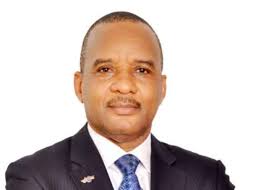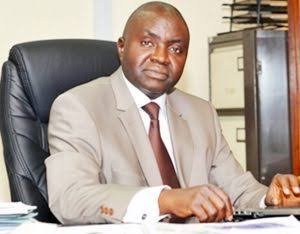The Gulf of Guinea has for some years now, retained the unenviable rating as the world’s piracy hotspot. The notoriety is based on the incessant attacks on vessels and kidnapping of seafarers.
In its 2020 report, the IMB disclosed that 135 crew members were kidnapped from their vessels, with the Gulf of Guinea accounting for over 95% kidnapped. A record of 130 crew members were kidnapped in 22 separate incidents.

Similarly, the IIMB in its first quarter, 2021 report, declared that the Gulf of Guinea remains dangerous for seafarers, accounting for nearly half of all reported piracy incidents in the first quarter.
In the report, the IMB once again described Nigerian waters as most volatile in the Gulf of Guinea, accounting for half of the 38 piracy incidences reported in Q1 of 2021 in the Gulf of Guinea.
Of course, the most dominant player in the Gulf of Guinea is Nigeria.
The IMB added that, pirates often raided ships in Nigeria to kidnap crews for ransom around the water regions.
According to the IMB, “Nigeria (Lagos-Apapa, Off Bayelsa-Brass, and Bonny Island-Port Harcourt): Pirates/robbers are often well-armed and violent and have attacked, hijacked, robbed ships and kidnapped crews along far from the coast rivers, anchorages ports, and surrounding waters.
This has been the lot of Nigeria for some years, we have taken over from lawless Somalia as the piracy hotspot in the world.
About 25 African governments, including all those bordering the Gulf of Guinea, signed the Yaoundé Code of Conduct in 2013 to tackle piracy, which was aimed at facilitating information sharing and established five maritime zones to be jointly patrolled. The pact has been partially implemented while most navies remain focused on safeguarding their own territorial waters.
Read Also: Do you think the deployment of the Deep Blue assets by NIMASA will curb piracy on Nigerian waters?
Apparently handy with the Yaoundé Code of Conduct of 2013, the European Union (EU) has now come up with its self-serving interventionist programme against piracy in the Gulf of Guinea.
The EU Council said, at the end of its meeting in Brussels that it has plans to launch the pilot case of what it called Coordinated Maritime Presences concept in the Gulf of Guinea.
Apart from this, there is an existing Anti-piracy law; the Suppression of Piracy and Other Maritime Offences (SPOMO) Act, which was signed into law by President Muhammadu Buhari in June 2019. The law gives effect to the provisions of the United Nations Convention on the Law of the Sea (UNCLOS), 1982, and the International Convention on the Suppression of Unlawful Acts against the Safety of Navigation (SUA), 1988, and its Protocols.
We are also aware that the Nigerian Maritime Administration and Safety Agency (NIMASA) has a working relationship with both the Nigeria Navy and the Nigeria Air Force. There is a subsisting Memorandum of Understanding exclusively for maritime safety.
The benefit of the subsisting MoU is apparently responsible for the conception, implementation and the final official launch and subsequent full deployment of the various maritime assets under the NIMASA Deep Blue Project.
The Deep Blue Project is a US$195 million Integrated National Security and Waterways Protection Infrastructure, and a collaboration between the Federal Ministry of Transportation, represented by NIMASA, and the Ministry of Defence, represented by the security agencies – Navy, Army, Air Force, Police and the Department of State Services.
Going by the pre-launch briefing which NIMAS had given, the project will be coordinated from the agency’s C4i Centre, a high tech satellite system that would enable aerial and water survey, monitoring, enforcement and regulation of activities that are being carried out in the Nigerian maritime environment, real time.
As a maritime media organisation, we have at various times before the official launch last week by President Muhammadu Buhari, being schooled in the capabilities of the high tech maritime assets, especially the three Special Mission Helicopters and the Unmanned Aerial Vessel
The Deep Blue Project comprises several components of highly sophisticated equipment, among which are (SMHs). These helicopters are equipped to carry out different kinds of operations, including search and rescue, as well as special operations that may be needed as situations require to guarantee round-the-clock security and safety of Nigeria’s waterways through enforcement of the relevant laws. The SMHs capability in the areas of security surveillance, as well as search and rescue, would make it possible for Nigeria to meet International Maritime Organization’s (IMO) requirement for maritime administration.
The fact is that, NIMASA has a statutory responsibility to keep Nigeria’s waters, especially the country’s exclusive economic zones, safe and secure.
For many years, NIMASA had excuses for the apparent vulnerability of ships trading in Nigerian waters and those coming in. And that was why Nigeria ranked as the number one hot spot, and Niger Deltans became notorious for piracy and kidnappings.
The fact is that, NIMASA now has the assets and the legal teeth to bite, thanks to the Suppression of Piracy and Other Maritime Offences Act. The Act now makes it possible for maritime crimes like piracy and kidnapping to be prosecuted in a court of competent jurisdiction in Nigeria.
We agree that, one of the statutory responsibilities of the Nigerian Maritime Administration and Safety Agency (NIMASA) is to keep Nigeria’s waters, especially the country’s exclusive economic zones, safe and secure. We also know that, failure to act this role has over the years made Nigeria to lose the huge benefits of its position as a huge maritime nation in West and Central Africa. The loss is substantially as a result of insecurity in the Gulf of Guinea, where she sadly accounts for more than 70 per cent of trade.
We dare say that, with the huge maritime assets in its possession, NIMASA now has to walk the talk. It should no longer be business as usual.
Without being pessimistic, the red flag in the phase of NIMASA’s anti-piracy war, will be its ability to manage the new relationship with the security forces, and the necessity of ensuring that the assets are in top shape and in good condition at all times.
Finally, the current board and management of NIMASA will be assessed based on the good will it enjoys and the maximum support of the Federal Government; all of which culminated in the acquisition of the US$195Million assets.
Its success or otherwise will be based on how successful the fight against maritime crime is, going forward.
















Discussion about this post